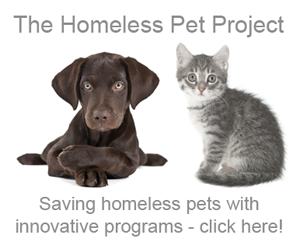What “No Kill” Means (and the Alternative)
by Ryan Clinton, Texas Attorney, No Kill Advocate, and Founder of FixAustin.org
A year (or so) ago, I experienced a random advocacy opportunity. As my late-evening return flight from Dallas to Austin was just about to take off, a last-minute passenger was allowed to board the plane, and he took the first empty seat available— the one next to me.
Now, even if you’re from Austin (heck, even if you’re intimately involved in Austin animal-welfare politics), you might not realize just how much this last-minute passenger regretted sitting next to me the moment he realized who I was. You see, the new passenger sitting next to me for the next 60 minutes was none other than the immediate-past Mayor of the City of Austin. And I’m the guy who publicly, adamantly, and sometimes successfully questioned his administration’s stewardship on animal issues.
But I was polite and professional (albeit persistent), and after the third time I attempted to strike up a conversation, he engaged. I asked him about his pit bulls (there was a rumor going around that he had two), but he didn’t own a dog. “Any pets?,” I asked. ”Yes,” he said, “my daughters have a cat that we got as a kitten from Town Lake Animal Center (Austin’s shelter). They do such a great job adopting out kittens that it took us three months to get one, and she was only available because she had a broken leg and a scar.”
Like a lighting strike, it hit me. This guy, intelligent, talented, and highly successful, hadn’t the faintest clue of what had really been going on at his City’s animal shelter under his leadership. The reason that there weren’t any small kittens at TLAC for he and his daughters to adopt was not that the shelter was doing such a good job of adopting out kittens. Nor was it due to a lack of kittens entering the shelter. No, the real explanation for the lack of kittens available at Town Lake Animal Center during his tenure was that if an impounded kitten was too small to be spayed or neutered, he or she was unceremoniously killed. No foster program; no bottle-baby program; no second chance. The kitten was killed. Indeed, the overwhelming majority of small kittens that entered Town Lake Animal Center— prior to recent reforms— were killed within minutes (or, if they were lucky, hours) of their arrival.
And that, my friends, is the norm at municipal and private open-admission animal shelters all across the United States.
Why do I bring this up now?
Because I continue to see, over and over again, in community after community, otherwise smart and talented people who oppose No Kill reforms not because they are uncaring, but because they are either uninformed or misinformed. (Others oppose No Kill because they are just plain crazy, but that’s for another blog post.) And let me be the first to say this: it’s our fault. If smart, caring, and talented people are against No Kill programs and policies because we haven’t communicated what we mean by “No Kill,” it’s on us. We have failed.
So, in an effort to dispel the myths and communicate exactly what being in favor of “No Kill” means, here goes:
What No Kill means: Bottle-baby programs that feed, nourish, vaccinate, spay/neuter, and adopt out kittens brought into the shelter under adoption age. The alternative: Killing all under-8-week-old kittens within minutes of arrival without giving them any chance of finding a loving home.
What No Kill means: Innovative and cost-effective parvovirus treatments that save 90% or more of puppies diagnosed with or exposed to the virus in shelters. The alternative: Killing all puppies exposed to parvovirus.
What No Kill means: Improved and welcoming customer service that treats every person who enters a shelter as a potential adopter, volunteer, foster parent, and donor. The alternative: Treating shelter visitors with noticeable suspicion and disdain, creating an unwelcoming environment, turning off potential adopters, and losing opportunities to cultivate volunteers and donors.
What No Kill means: Low-cost and free spay-neuter programs, as well as trap-neuter-and-release programs, proven to reduce shelter intake, saving money over time as the shelter population declines. The alternative: Doing nothing to reduce shelter intake (or worse, enacting laws proven to increase shelter intake), and instead continuing the cycle of killing.
What No Kill means: Reducing shelter intake by helping solve routine behavioral and medical problems encountered by pet owners considering surrendering their dogs or cats. The alternative: Killing animals for routine behavioral and medical problems.
What No Kill means: A robust and creative adoptions program that includes enhanced marketing techniques and off-site adoptions, which take the animals out into the community rather than waiting for adopters to come to shelters, which are often out-of-the-way, dark, smelly, loud, and depressing. The alternative: Killing the animals that would have been adopted with a better adoptions program, and blaming the public for those that don’t get adopted.
What No Kill means: Learning from the nation’s best shelters and shelter directors, and replicating successful programs and policies. The alternative: Shelters continuing to do what they’ve always done, ignoring innovation, avoiding change, and missing clear opportunities to save lives.
What No Kill means: Inspirational, positive leadership committed to dramatically decreasing unnecessary shelter killing, rejecting excuses, and embracing change. The alternative: Bureaucratic management that clings to disproven myths and excuses for killing, opposes life-saving innovation, and blames the public for the killing of animals— killing that the shelter itself has the power to avoid.
Finally, what No Kill means: Saving all treatable and healthy adoptable pets impounded at open-admission shelters (or roughly 90% of all impounded companion animals). The alternative: Killing the overwhelming majority of impounded animals and continuing the cycle of killing that currently takes place at most shelters.
Oh, yes, I did make these arguments to the former Mayor of Austin on our hour-long flight— although with the utmost courtesy, of course. It’s possible that I even reached him; he appeared alarmed to learn the real reason he had so much trouble finding a kitten. But the bigger lesson, I think, is that we animal advocates need to continue to do a better job at explaining the difference between the traditional animal-shelter strategy (“save a few, kill the rest”), and the hope, strategies, and progress that the No Kill movement offers.
It is not enough to criticize those who oppose No Kill reforms. It is insufficient to call names and demand change. Yes, we should stand up, stand tall, and fight for proven, cost-effective life-saving reforms. But we must also teach. The overwhelming majority of the public is with us, even if they don’t yet entirely know what it is we’re for (and against).








